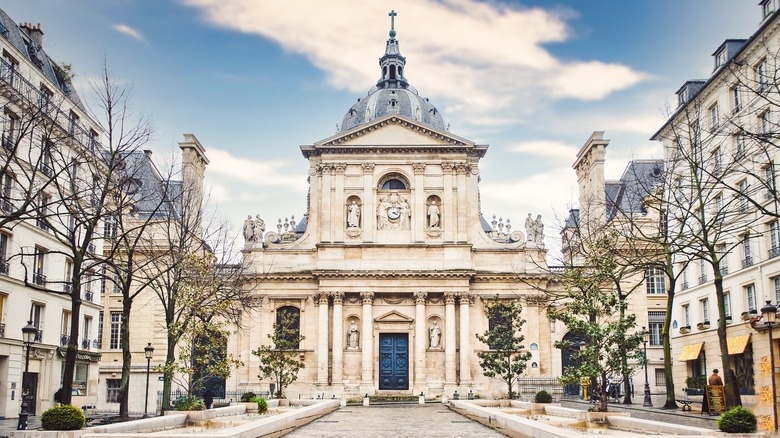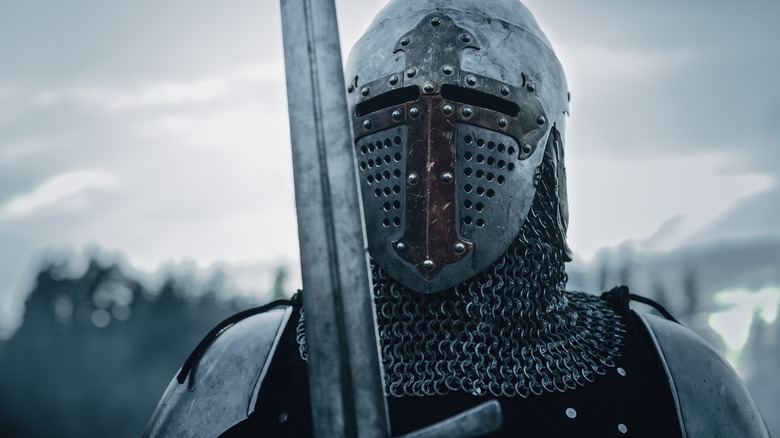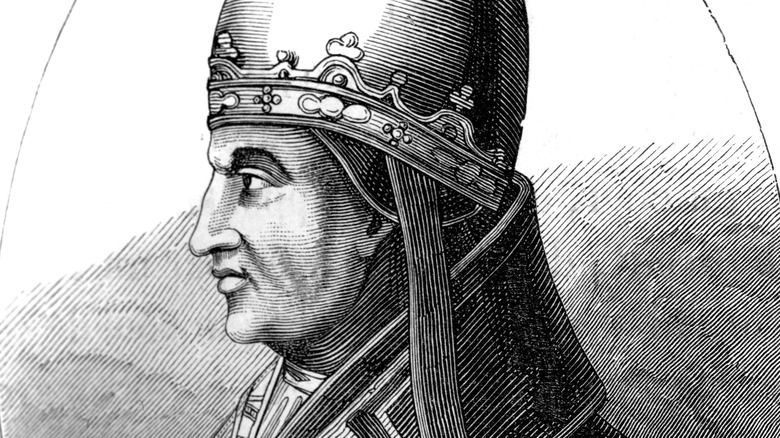Why The University Of Paris Closed For 2 Years After A Bar Fight
One of the oldest universities in Europe, the University of Paris was founded toward the end of the 12th century, sprouting from the religious school associated with the Notre Dame cathedral (via Britannica). It became the continental center of Christian teaching; one of its professors was none other than Thomas Aquinas. It also taught law, medicine, and the arts, which included mathematics, philosophy, astronomy, and grammar.
This was a time in France, and Europe in general when a balance of power (and at times conflict) existed between monarchies and the Roman Catholic Church. Different spheres of influence and authority were often carved out. On the orders of King Phillip II of France, the university was placed under the sole authority of the Church in 1200, according to the New World Encyclopedia. French police forces could not arrest students or professors of their own accord. The Church would handle all crimes and punishments, asking for government assistance if needed. When a bar fight involving University of Paris students broke out in Spring 1229, the Church would indeed ask the monarchy for help, to disastrous effect.
The Brawl and the Slaughter
A couple of days before Ash Wednesday, during Carnival, some students were enjoying the vacation from their studies and entered a tavern in the Parisian suburb of St. Marcel. Drinking their fill, they got into a heated argument with the pub owner over the price of their wine (via Frederic Duncalf and August Krey's "Parallel Source Problems in Medieval History"). "They began to give each other blows," a historian wrote in the 1250s. Townspeople, often resentful of university learners and teachers being effectively above the law, joined the brawl on the publican's side and forced the students out.
Enraged, the students retreated to their university and gathered some companions (more teenage boys) along with weapons. The next day they marched back to the tavern and completely destroyed it, then attacked townspeople in the streets for good measure. In response to complaints from St. Marcel officials, the bishop of Paris asked the queen of France, Blanche of Castile, to punish the students. Guards were sent out and simply attacked the first group of students they found, who were likely not the perpetrators, wounding many and killing some. Another historian from the Middle Ages wrote, "Nearly 20 were thrown into the Seine" (Parallel Source Problems in Medieval History").
The Pope to the Rescue
Horrified, University of Paris administrators shut down the school. They went to the bishop and the queen and demanded justice, to no avail. On March 27, the administrators declared their institution would remain closed as long as justice was denied, according to "Parallel Source Problems in Medieval History." "Unless satisfactory reparation is made to the whole body of masters and students for the atrocious injuries," the university announced, "...no one shall be permitted to remain in the city or diocese of Paris to study, either for the purpose of teaching or being taught."
With that, the professors and students left Paris in a great dispersion. Some even left France, heading to England, Italy, and elsewhere. According to History Collection, by November 1229 the pope was involved. Gregory IX demanded that King Louis IX and Queen Blanche of Castile make things right, but even his words fell on dead ears. The University of Paris strike of 1229 lasted two years before Pope Gregory issued a Papal Bull in 1231, promising the college his personal protection and even greater independence from outside authority. Satisfied, the scholars and students returned.


